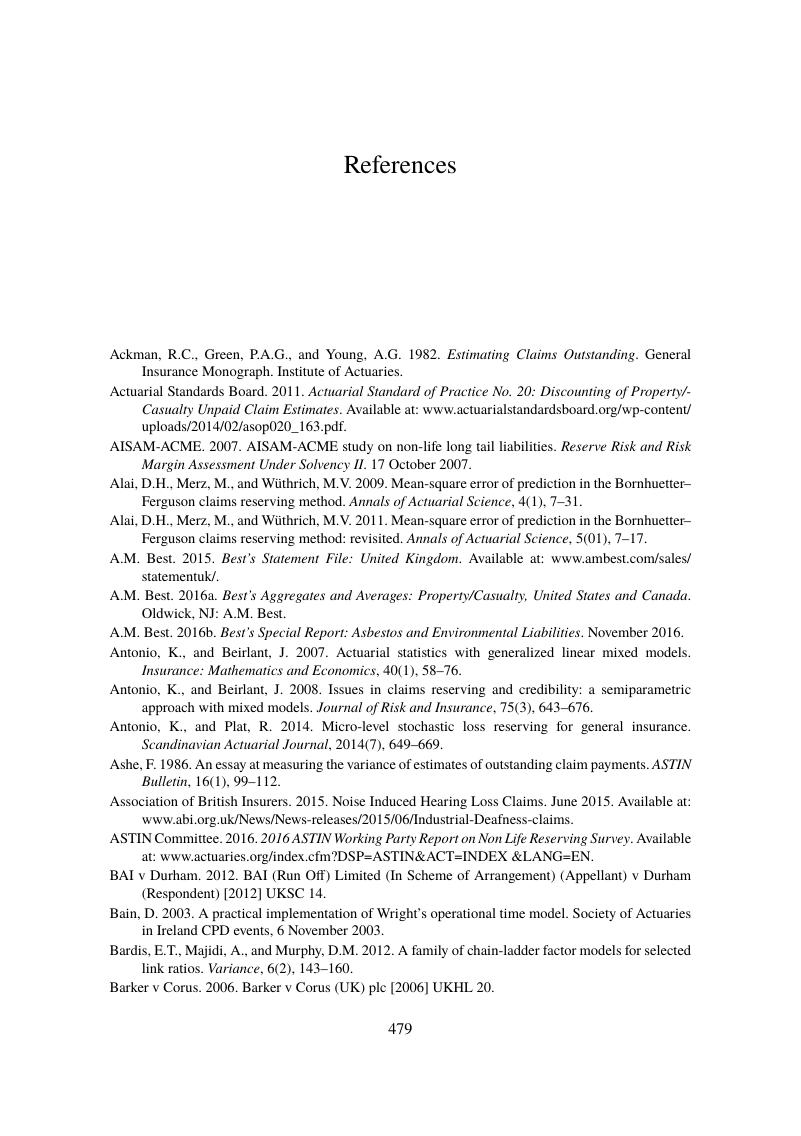Book contents
- Frontmatter
- Contents
- Preface
- Acknowledgements
- 1 Introduction
- 2 Data
- 3 Deterministic Reserving Methods
- 4 Stochastic Reserving Methods
- 5 Reserving in Practice
- 6 Selected Additional Reserving Topics
- 7 Reserving in Specific Contexts
- Appendix A Mathematical Details for Mean Squared Error of Prediction
- Appendix B R Code Used for Examples
- References
- Index
- References
- Frontmatter
- Contents
- Preface
- Acknowledgements
- 1 Introduction
- 2 Data
- 3 Deterministic Reserving Methods
- 4 Stochastic Reserving Methods
- 5 Reserving in Practice
- 6 Selected Additional Reserving Topics
- 7 Reserving in Specific Contexts
- Appendix A Mathematical Details for Mean Squared Error of Prediction
- Appendix B R Code Used for Examples
- References
- Index
- References
Summary

- Type
- Chapter
- Information
- Claims Reserving in General Insurance , pp. 479 - 491Publisher: Cambridge University PressPrint publication year: 2017

